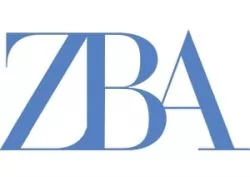- Introduction
The Supreme Court's consistent position on the role of Adjudicating Authority ("AA") under Section 7 of the Insolvency and Bankruptcy Code, 2016 ("Code") has been limited to determining a default by the borrower based on default on documents produced before the AA. The Supreme Court and the NCLAT have consistently cautioned the NCLTs whilst evaluating such applications not to travel beyond this limited aspect of the matter.
However, in a recent ruling the Supreme Court in Indus Biotech Private Limited v. Kotak India Venture (Offshore) Fund1 ("Indus Biotech") appears to have changed course and in the process sent a confusing message to AAs on at least 3 counts: (a) first, the AA should in its evaluation take into account several factors including ongoing negotiations between the parties to conclusively determine existence of default; (b) secondly, consider the solvency of a corporate debtor prior to initiation of insolvency proceedings under the Code; and (c) thirdly, refer parties to arbitration or dispute resolution if it is not possible to definitively determine a default by the corporate debtor.
- Brief Facts
Kotak India Venture (Offshore) Fund and its group companies ("Kotak Venture") subscribed to optionally convertible redeemable preference shares ("OCRPS") issued by Indus Biotech Private Limited ("CD"). For certain commercial considerations, the CD proposed to convert OCRPS subscribed by Kotak Venture into equity shares. However, parties could not agree on the valuation and appropriate formula for conversion. Whilst this dispute was pending, Kotak Venture sought early redemption of OCRPS, which the CD failed or ignored to pay the redemption amount. Consequently, Kotak Venture approached NCLT Mumbai ("NCLT") under Section 7 of the Code contending that the CD had defaulted in payment of the redemption amount.
NCLT in a mechanical manner and without full appreciation of terms of the agreements between the parties concluded that there was no default by the CD. This is contrary to the established jurisprudence that clearly requires the AA to conclusively determine the default on the basis documents and agreements before it. Remarkably, NCLT also concluded that there was indeed a dispute between the parties that could only be resolved by arbitration. The NCLT's reasoning for rejecting the insolvency application was because it regarded the CD as solvent. This finding by the NCLT is wholly inconsistent with prior case law as also the letter and spirit of the Code.
- Supreme Court's Blessing – Worrisome for Insolvency Jurisprudence
The Supreme Court in appeal agreed with the NCLT's conclusion. The reasoning of both the NCLT and Supreme Court are problematic for three primary reasons:
- Determination of default not a sole factor- The Supreme Court without analysing the terms of the agreement concluded that since discussions between the parties were not concluded, it was premature to determine whether a default had occurred. This is a paradigm shift as the Supreme Court's view introduces extraneous factors in the evaluation of a default and falls outside the terms agreed by the parties. This will negatively impact India's objective as an attractive destination for foreign investors, as it introduces an element of uncertainty and subjectivity in the insolvency process.
- Solvency of corporate debtor can be misused- The criterion of solvency of a corporate debtor is wholly alien to the scheme of the Code. The aims and object of the Code are not based on the solvency of a corporate debtor. The solvency of corporate debtor is to be determined on the basis of a default by a corporate debtor in meeting its obligations towards a creditor. It is a simple, certain and objective test.
- AA can refer parties to arbitration – The Supreme Court ruling endorses the view that the AA can refer parties to arbitration or for resolution of disputes if there are disputes, without emphasising the requirement to first conclusively determine the existence of a default by the corporate debtor. This approach, undermines and dilutes the potency of the insolvency process.
- The AA has to conclusively determine the existence of default before admitting or rejecting an application under Section 7 of the Code. Such a determination is based on evaluation of documents and agreements submitted by the creditor. The AA is required to interpret terms of the agreement and admit or reject the application. Any other consideration is not in keeping with the spirit of the Code.
- Conclusion
The judgement of the Supreme Court unnecessarily introduces an element of uncertainty and subjectivity in determining whether the insolvency process is to commence at the behest of a financial creditor. A default by a corporate debtor to its creditor for a financial debt in most cases is straight forward- the inquiry being akin to a tick-box exercise. The ruling is clearly cause for concern to all stakeholders involved with the insolvency process in India. It is hoped that the Supreme Court quickly clarifies the correct position and reverts to the previous state of law.
Footnote
1 Civil Appeal No. 1070/2021 @ SLP (C) No. 8120 of 2020M
The above is a generic analysis and should not be regarded as a substitute for specific advice based on the facts of a client's objectives and specific commercial agreements reached. Please do reach out to us at mail@zba.co.in for any queries.

